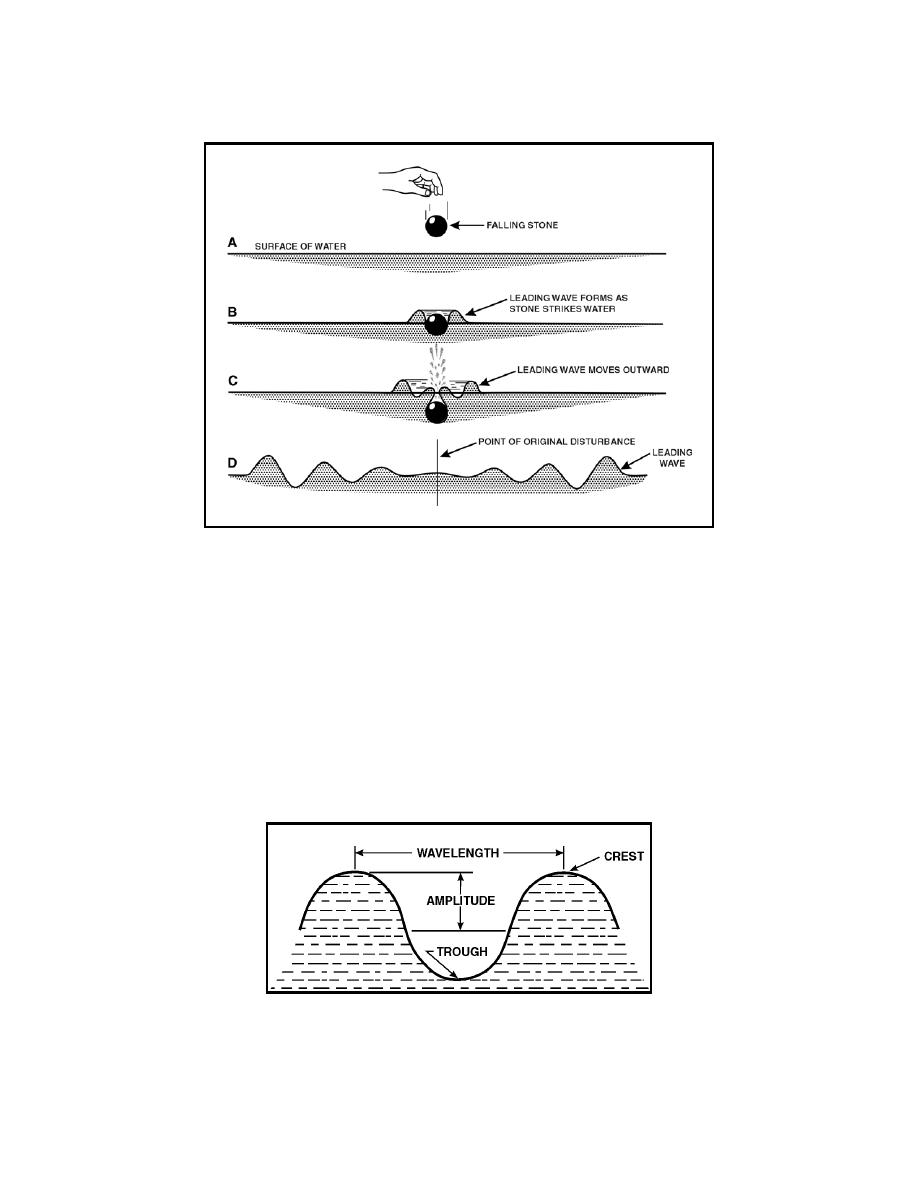
TC 9-64 _________________________________________________________________________
Figure 1-2. How a Falling Stone Creates Wave Motion on Water's Surface
1-13. To explain transverse waves, we again use our example of water waves.
Figure 1-3 is a cross-section diagram of waves viewed from the side. Notice
that the waves are a succession of crests and troughs. The wavelength (one
360-degree cycle) is the distance from the crest of one wave to the crest of the
next, or between any two similar points on adjacent waves. The amplitude of
a transverse wave is half the distance measured vertically from the crest to
the trough. Water waves are known as transverse waves because the motion
of the water is up and down, or at right angles to the direction in which the
waves are traveling. You can see this by observing a cork bobbing up and
down on water as the waves pass by; the cork moves very little in a sideways
direction.
Figure 1-3. Elements of a Wave
1-4


 Previous Page
Previous Page
